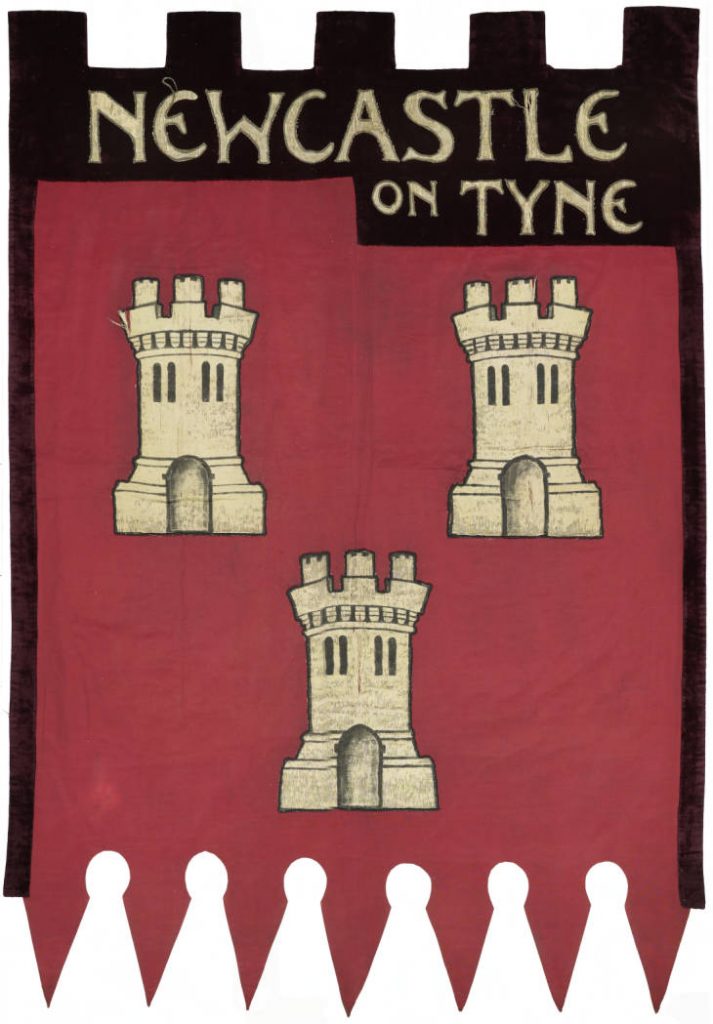
The 8th June 2013 marks the 100th anniversary of the death of the suffragette Emily Davison. A militant suffragette, whose family originated from Longhorsley in Northumberland, Emily infamously ran in front of the King’s horse at the Epsom Derby on 4th June 1913. She was seriously injured and died of her injuries in hospital four days later. It has long been speculated whether Emily was actually trying to kill herself in order to draw attention to the suffragette cause. Analysis of newsreel from the day now suggests that she may have been simply trying to attach a suffragette banner to the horse.
This is Ethel Williams’ suffragist banner. Ethel was the first woman to found a general medical practice in Newcastle upon Tyne in 1906. She was also reportedly the first woman to drive a car in the North of England that same year. She attended the London School of Medicine for Women and graduated in 1891, but had to gain her hospital experience abroad in Paris and Vienna due to male prejudice against women training in British hospitals. Such obstacles and her belief in the need to supplement medical care with social reform led to her active involvement in the suffrage movement.
Ethel was an active member of the National Union of Woman’s Suffrage Societies (also known as the NUWSS or the Suffragists). Unlike the Suffragettes, the Suffragists aimed to achieve women’s suffrage using lawful and peaceful methods. Ethel took part in the ‘Mud March’ of 1907 in London, the first large procession organised by the NUWSS, so-called due to the terrible weather conditions on the day. Despite this, over 3,000 women from all walks of life took part. There is a good chance that she may have used this banner during the march as women from across the country brought banners to show which area they represented. Red and white were the official colours of the NUWSS and both colours can been seen in the banner. She was also often seen in suffrage processions along Northumberland Street in Newcastle. During World War One she formed the Women’s International League for Peace and Freedom.
She co-founded the Northern Women’s Hospital in 1917 and, when she retired in 1924, she left her practice to another female doctor, Dr Mona MacNaughton. By this time there were 14 female doctors practicing in Newcastle. Ethel died in 1948 and Ethel Williams’ Halls of Residence were opened in her memory in 1950 at Newcastle University.
